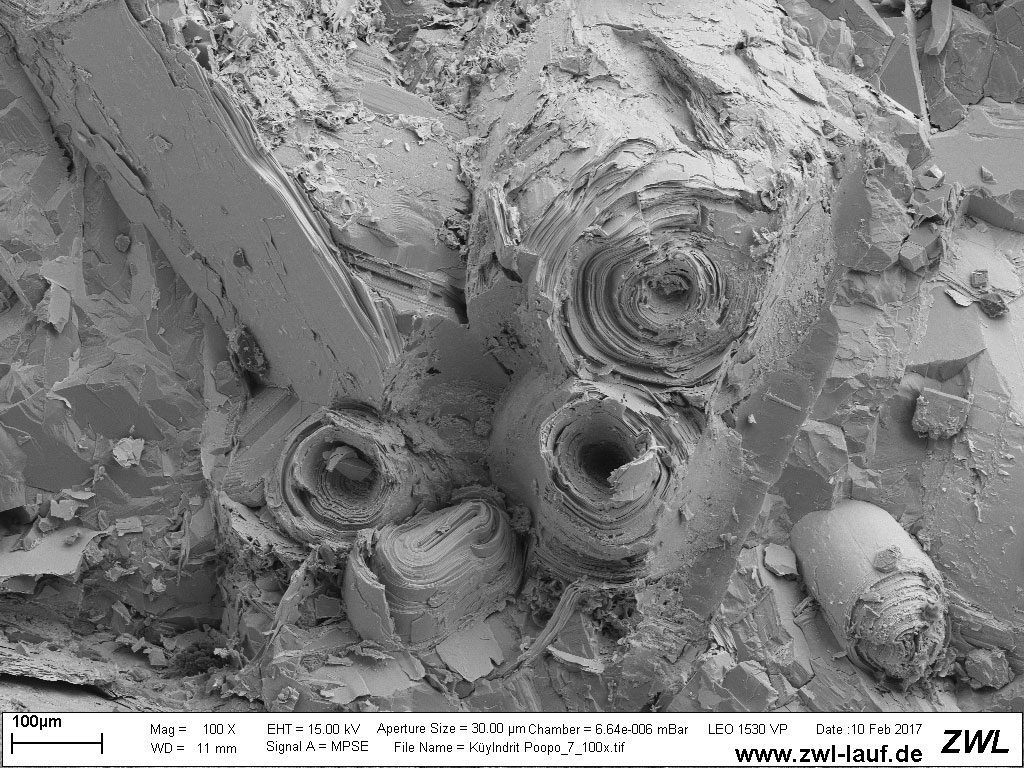11 – Type minerals from Bolivia
Ano 04 (2017) - Número 01 Artigos
![]() 10.31419/ISSN.2594-942X.v42017i1a11HP
10.31419/ISSN.2594-942X.v42017i1a11HP
Herbert Poellmann, Prof. Dr.Dr. Institute of Geosciences and Geography, Martin Luther University Halle-Wittenberg, Halle (Saale), Germany.
Bolivia is since the time of the spanish conquerors a region with intensive mining activities. Since the spanish silver boom in Potosi from 1545 also elements like tin, copper, tungsten, iron and zinc are produced from these ores. These extremeley rich mines led to the finding of even new minrals. Some of these are sulfosalts or other complex sulfide minerals. But also some secondary minerals of fluorides, arsenates, phosphates and hydroxides were described. Nowadays the rich lithium reserves in the Salar de Uyuni are also in the focus for further improvement due to the high demand for lithium in industry, but not producing new mineral type specimen. These high mining activities made it possible to find many different ores and also nice mineral specimen. Bolivia even has a lot of type localities for new minerals which were first found there and described from these mines in Bolivia. One oft he most well known is the polymorph of ZnS – wurtzite which was originally described from Oruro. A summarizing table of more than 40 new minerals described from Bolivia is given in table 1.
Bolivia is since the time of the spanish conquerors a region with intensive mining activities. Since the spanish silver boom in Potosi from 1545 also elements like tin, copper, tungsten, iron and zinc are produced from these ores. These extremeley rich mines led to the finding of even new minrals. Some of these are sulfosalts or other complex sulfide minerals. But also some secondary minerals of fluorides, arsenates, phosphates and hydroxides were described. Nowadays the rich lithium reserves in the Salar de Uyuni are also in the focus for further improvement due to the high demand for lithium in industry, but not producing new mineral type specimen. These high mining activities made it possible to find many different ores and also nice mineral specimen. Bolivia even has a lot of type localities for new minerals which were first found there and described from these mines in Bolivia. One oft he most well known is the polymorph of ZnS – wurtzite which was originally described from Oruro. A summarizing table of more than 40 new minerals described from Bolivia is given in table 1.
Table 1. Minerals describe from Bolivia
| Aheylite Fe2+Al6(PO4)4(OH)8 · 4H2O | Ahlfeldite (TL)NiSeO3·2H2O
|
Aramayoite : Ag3Sb2(Bi,Sb)S6 |
| Alfredopetrovite (TL) Al2(Se4+O3)3 · 6H2O | Barringerite (Fe,Ni)2P | Berndtite SnS2 |
| Braithwaiteite NaCu52+(Ti4+Sb5+)O2(AsO4)4[AsO3(OH)]2 · 8H2O | Bismite Bi2O3
|
Canfieldite Ag8SnS6 |
| Clino-scarkempffite Ag15Pb6Sb21Bi18S72 | Colquiriite CaLiAlF6 | Cylindrite FePb3Sn4Sb2S14 |
| Daubréeite BiO(OH)
|
Thioelaterite (C, H,O,S) | Eldragónite Cu6BiSe4(Se2) |
| Favreauite PbBiCu6O4(SeO3)4(OH) · H2O
|
Ferrivauxite Fe3+Al2(PO4)2(OH)3 · 5H2O | Franckeite Pb21.7Sn9.3Fe4.0Sb8.1S56.9 |
| Grundmannite CuBiSe2
|
Hansblockite (Cu,Hg)(Bi,Pb)Se2
|
Herzenbergite SnS
|
| Hocartite Ag2FeSnS4 | Hydrotungstite WO2(OH)2 · H2O | Jeanbandyite (Fe3+,Mn2+)Sn4+(OH,O)6 |
| Lammerite Cu3(AsO4)2 | Magnesio-riebeckite Na2(Mg3Fe23+)Si8O22(OH)2
|
Mandarinoite Fe23+(Se4+O3)3 · 6H2O
|
| Metavauxite Fe2+Al2(PO4)2(OH)2 · 8H2O | Nikischerite NaFe62+Al3(SO4)2(OH)18(H2O)12 | Olsacherite Pb2(Se6+O4)(SO4) |
| Oscarkempffite Ag10Pb4(Sb17Bi9)S48 | Ottemannite Sn2S3 | Paravauxite Fe2+Al2(PO4)2(OH)2 · 8H2O |
| Pavonite AgBi3S5 | Penroseite NiSe2 | Povondraite NaFe33+(Fe43+Mg2)(Si6O18)(BO3)3(OH)3O |
| Quijarroite Cu6HgPb2Bi4Se12 | Ramdohrite CdAg5.5Pb12Sb21.5S48 | Rhodostannite (Cu,Ag)2FeSn3S8 |
| Rooseveltite BiAsO4 | Teallite PbSnS2 | Sigloite Fe3+Al2(PO4)2(OH)3 · 7H2O |
| Vauxite Fe2+Al2(PO4)2(OH)2 · 6H2O
|
Wurtzite ZnS |
One of the most mineralogically interesting phases among those is cylindrite (FePb3Sn4Sb2S14) – a crystal structure with special cylindrical oriented sheets. Figure 1, shows the typical typical cylindrite rolls. The complex structure was solved by Kaden,R. 1980.
REFERENCE
KADEN, R.: Synthese, Struktur und physikalische Eigenschaften komplexer Metallsulfide Kylindrit FeSn4Pb3Sb2S14 und Boulangerit Pb5Sb4S11, Dissertation, Univ. Leipzig, (1980)

